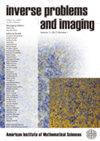Synthetic-Aperture Radar image based positioning in GPS-denied environments using Deep Cosine Similarity Neural Networks
IF 1.5
4区 数学
Q2 MATHEMATICS, APPLIED
引用次数: 3
Abstract
Navigating unmanned aerial vehicles in precarious environments is of great importance. It is necessary to rely on alternative information processing techniques to attain spatial information that is required for navigation in such settings. This paper introduces a novel deep learning-based approach for navigating that exclusively relies on synthetic aperture radar (SAR) images. The proposed method utilizes deep neural networks (DNNs) for image matching, retrieval, and registration. To this end, we introduce Deep Cosine Similarity Neural Networks (DCSNNs) for mapping SAR images to a global descriptive feature vector. We also introduce a fine-tuning algorithm for DCSNNs, and DCSNNs are used to generate a database of feature vectors for SAR images that span a geographic area of interest, which, in turn, are compared against a feature vector of an inquiry image. Images similar to the inquiry are retrieved from the database by using a scalable distance measure between the feature vector outputs of DCSNN. Methods for reranking the retrieved SAR images that are used to update position coordinates of an inquiry SAR image by estimating from the best retrieved SAR image are also introduced. Numerical experiments comparing with baselines on the Polarimetric SAR (PolSAR) images are presented.基于深度余弦相似度神经网络的gps拒绝环境下合成孔径雷达图像定位
无人机在危险环境下的导航具有重要意义。有必要依靠其他信息处理技术来获得在这种情况下导航所需的空间信息。本文介绍了一种新的基于深度学习的导航方法,该方法完全依赖于合成孔径雷达(SAR)图像。该方法利用深度神经网络(dnn)进行图像匹配、检索和配准。为此,我们引入了深度余弦相似度神经网络(dcsnn),用于将SAR图像映射到全局描述性特征向量。我们还介绍了dcsnn的微调算法,dcsnn用于为跨越感兴趣的地理区域的SAR图像生成特征向量数据库,然后将其与查询图像的特征向量进行比较。通过使用DCSNN的特征向量输出之间的可伸缩距离度量,从数据库中检索与查询相似的图像。本文还介绍了对检索到的SAR图像进行重新排序的方法,该方法通过对检索到的最佳SAR图像进行估计来更新查询SAR图像的位置坐标。给出了在偏振SAR (PolSAR)图像上与基线进行比较的数值实验。
本文章由计算机程序翻译,如有差异,请以英文原文为准。
求助全文
约1分钟内获得全文
求助全文
来源期刊

Inverse Problems and Imaging
数学-物理:数学物理
CiteScore
2.50
自引率
0.00%
发文量
55
审稿时长
>12 weeks
期刊介绍:
Inverse Problems and Imaging publishes research articles of the highest quality that employ innovative mathematical and modeling techniques to study inverse and imaging problems arising in engineering and other sciences. Every published paper has a strong mathematical orientation employing methods from such areas as control theory, discrete mathematics, differential geometry, harmonic analysis, functional analysis, integral geometry, mathematical physics, numerical analysis, optimization, partial differential equations, and stochastic and statistical methods. The field of applications includes medical and other imaging, nondestructive testing, geophysical prospection and remote sensing as well as image analysis and image processing.
This journal is committed to recording important new results in its field and will maintain the highest standards of innovation and quality. To be published in this journal, a paper must be correct, novel, nontrivial and of interest to a substantial number of researchers and readers.
 求助内容:
求助内容: 应助结果提醒方式:
应助结果提醒方式:


